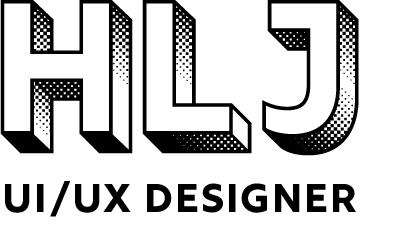Potential logo design by Hana Jimenez
Overview
This project focused on converting an existing Google Sheet of trans-competent providers into a fully functioning website. The goal was to create a searchable platform that serves both the trans community and healthcare providers, improving access to care. The project was commissioned by a collaborative trans wellness group.
The Challenge
The current process for trans individuals to find a trans-competent provider primarily relies on word of mouth, which is neither scalable nor efficient. The challenge was to develop a comprehensive and user-friendly website that trans individuals could easily navigate to find trusted healthcare providers. Additionally, key challenges included:
- Defining the visual brand of the website.
- Determining which organization should oversee and represent the database.
Phase One: Research
Research Goals
- Understand what the community at large needs from a trans-competent database website
- Learn how the website can support providers in their journey to become more trans-competent
Research Methods
To gather necessary insights, we employed the following research methods:
- Provider Interviews: Conversations with four providers experienced in trans care.
- Community Surveys: Conducted to gauge the experiences and needs of the trans community.
- Ongoing Provider Interviews: Additional discussions to further refine insights during development.
Research Results
Community Survey Insights
- Demographics: The majority of respondents identified as white.
- Resource Access: 69% of respondents found it difficult to locate trans-competent resources.
- Provider Search: Most respondents relied on word of mouth or social media to find providers.
- Anxiety: 93% reported feeling anxious when visiting a provider for the first time.
- Vetting: When seeing a provider, 34 respondents hoped the provider was trans-competent, and 26 vetted them beforehand.
- Trust Factors: Trans individuals felt more assured of a provider’s competence if other trans people vouched for them, and when providers used chosen names and pronouns. Asking for consent before discussing sensitive subjects also helped build trust.
- In-Demand Providers: Respondents indicated that therapists and medical professionals were the most sought-after provider types.
Provider Interview Insights
During provider interviews, we discovered the following barriers to trans-competency in healthcare:
- Lack of time for additional education or specialized courses.
- Trans topics are not mainstreamed within existing medical education programs.
- Many providers believe they need a certification to be considered trans-competent.
- Some providers hesitate to self-identify as trans-competent due to concerns about expertise.
Recommendations from Providers
- Engage with quality resources written by and about the trans community.
- Include pronouns and chosen names in documentation.
- Attend trainings and seminars (both providers and staff).
- Use examples that represent LGBTQ+ individuals in conversations and documentation.
Scope and Constraints
The development of the database backend and search functionality posed significant challenges in terms of cost and time. To manage these constraints, the project was designed with limited scope, focusing on the following:
- Google Material Components: Using this system simplified handoff between designers and developers.
- Cost Efficiency: By prioritizing a lean development approach, we reduced the complexity and cost of the project.
- Prioritizing UI Simplicity: This allowed us to focus on usability and rapid implementation while ensuring the functionality met the community’s immediate needs.
Mock-ups and Prototypes
Several prototypes were developed to explore different user interfaces, keeping usability and accessibility at the forefront. The key deliverables included:
- Minimum Viable Product (MVP) Desktop Prototype: Focused on basic functionality, search, and filtering for the database.
- Higher-Level Desktop Prototype: Added more advanced functionality and polished design elements.
- MVP Mobile Prototype: Designed to ensure mobile accessibility for on-the-go searches.
- Design Rationale: The design aimed to balance functionality and cost, ensuring the platform was easy to navigate for both providers and the trans community.
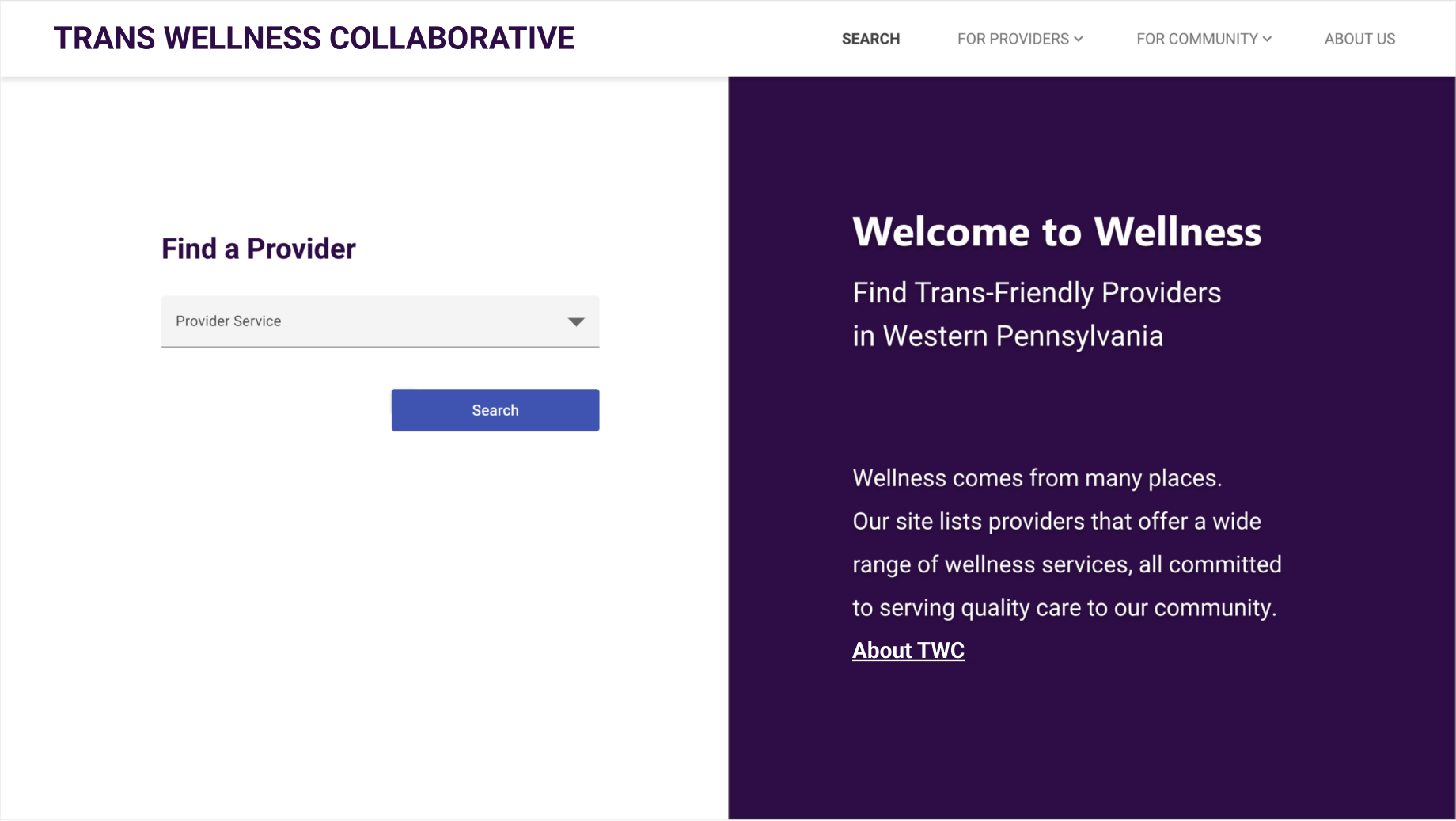
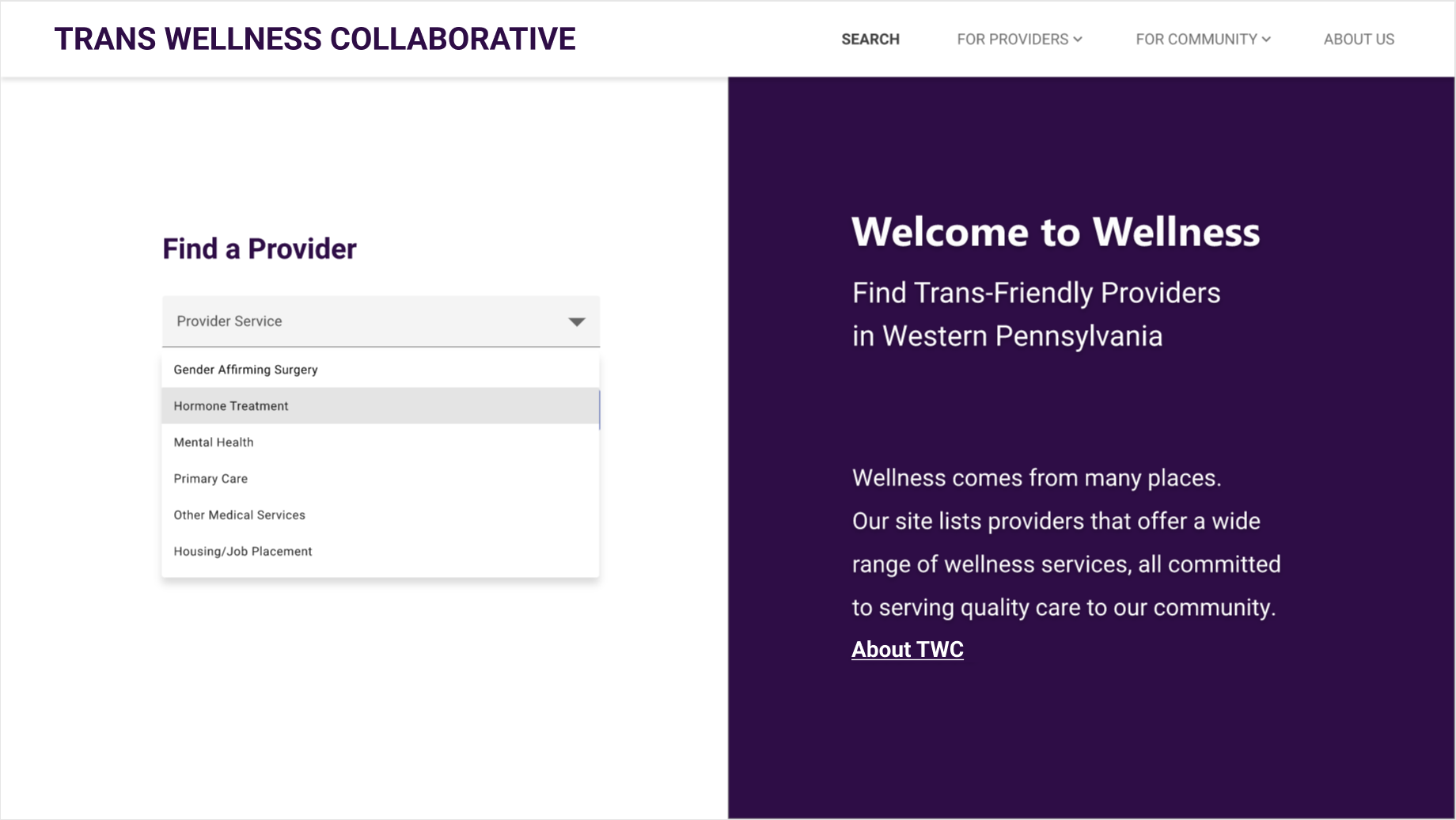
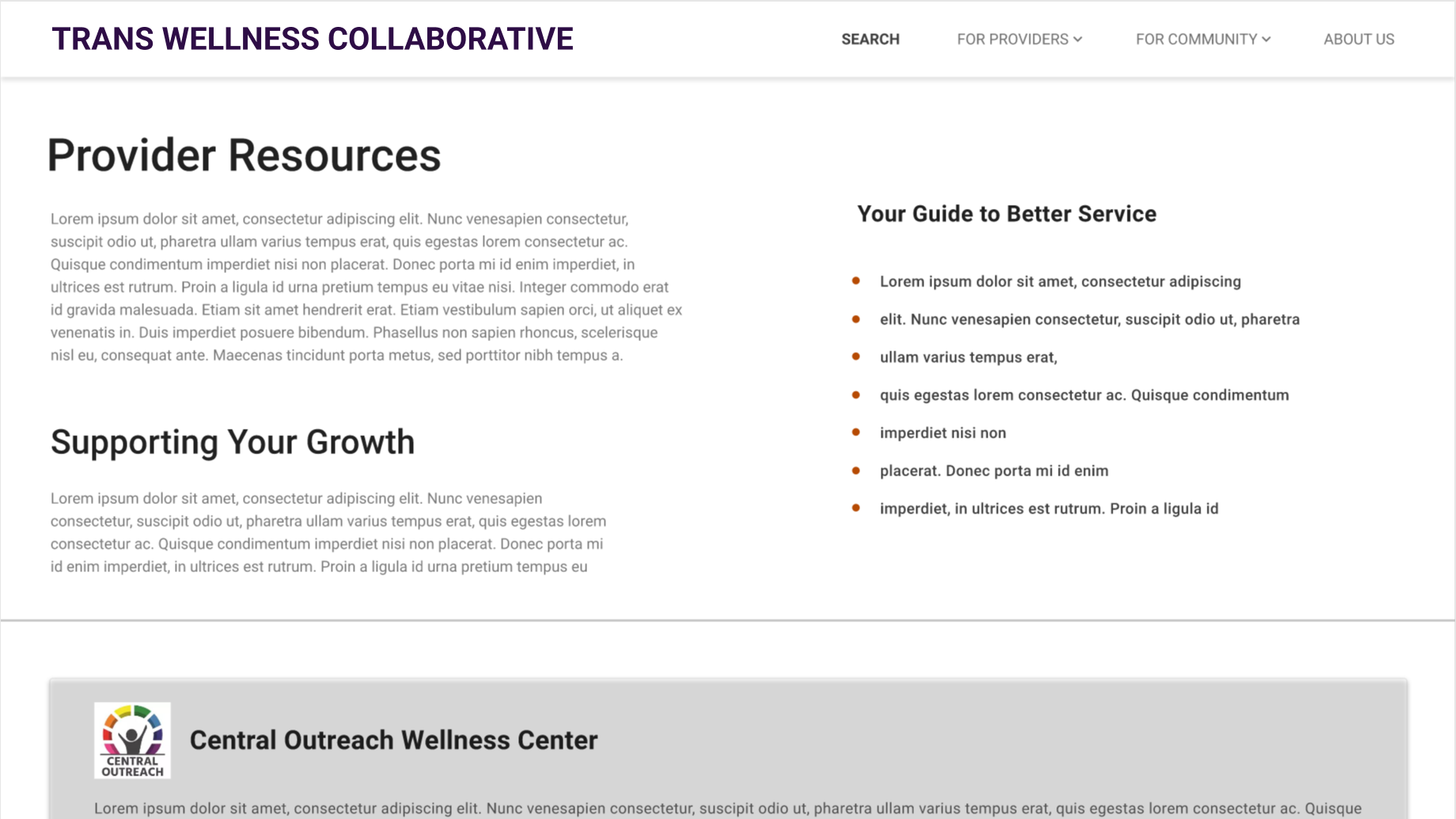

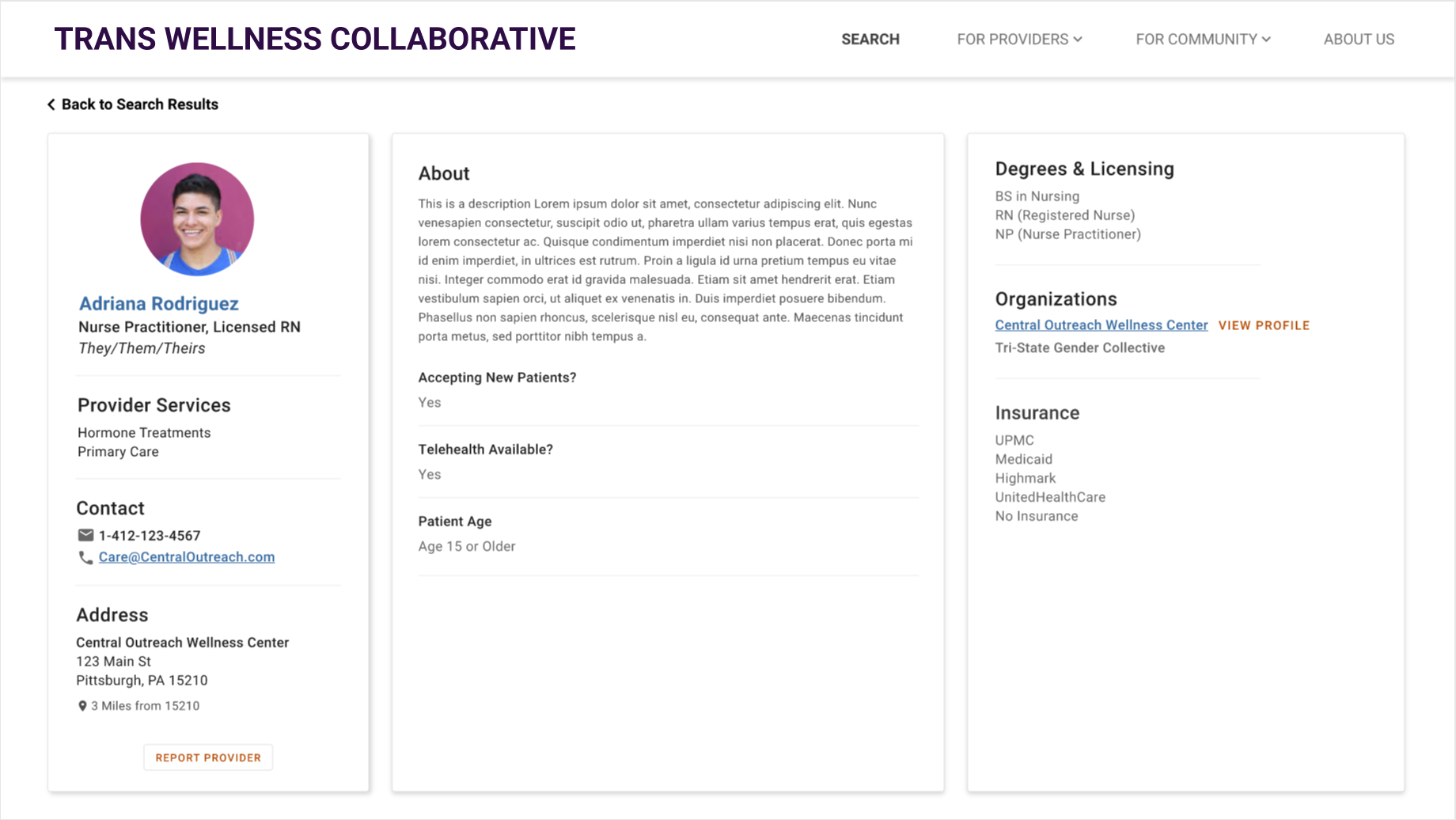
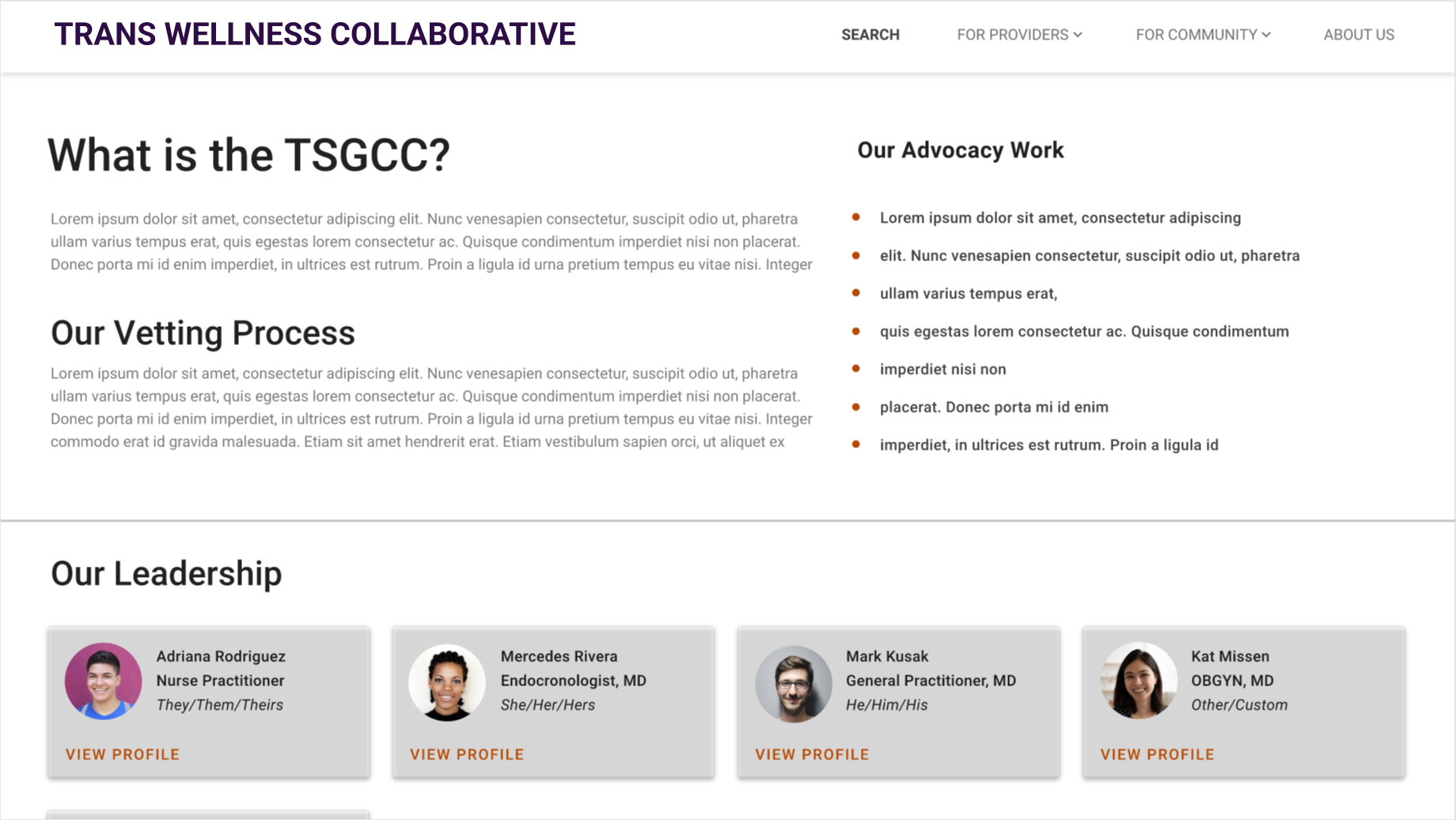
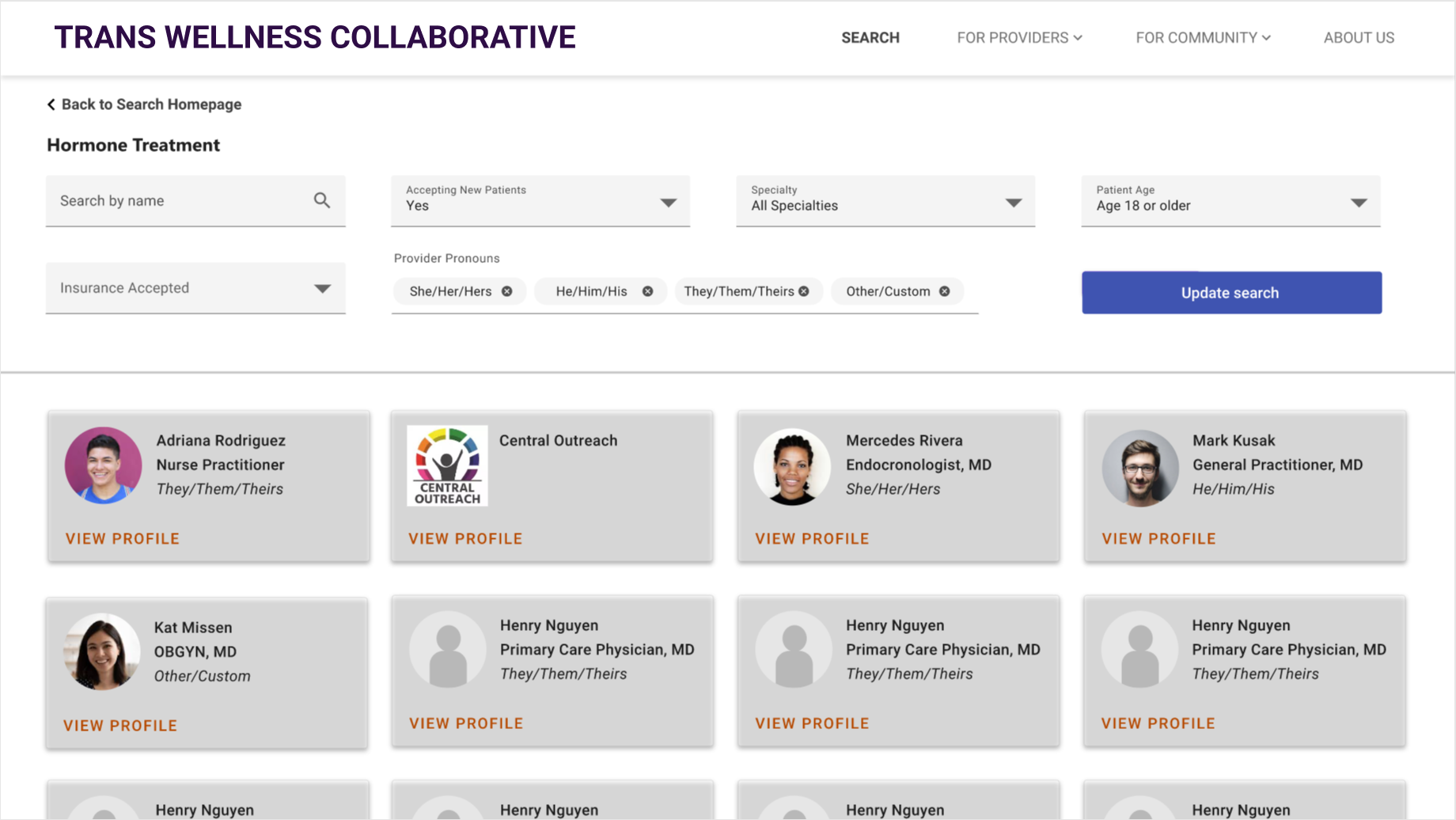
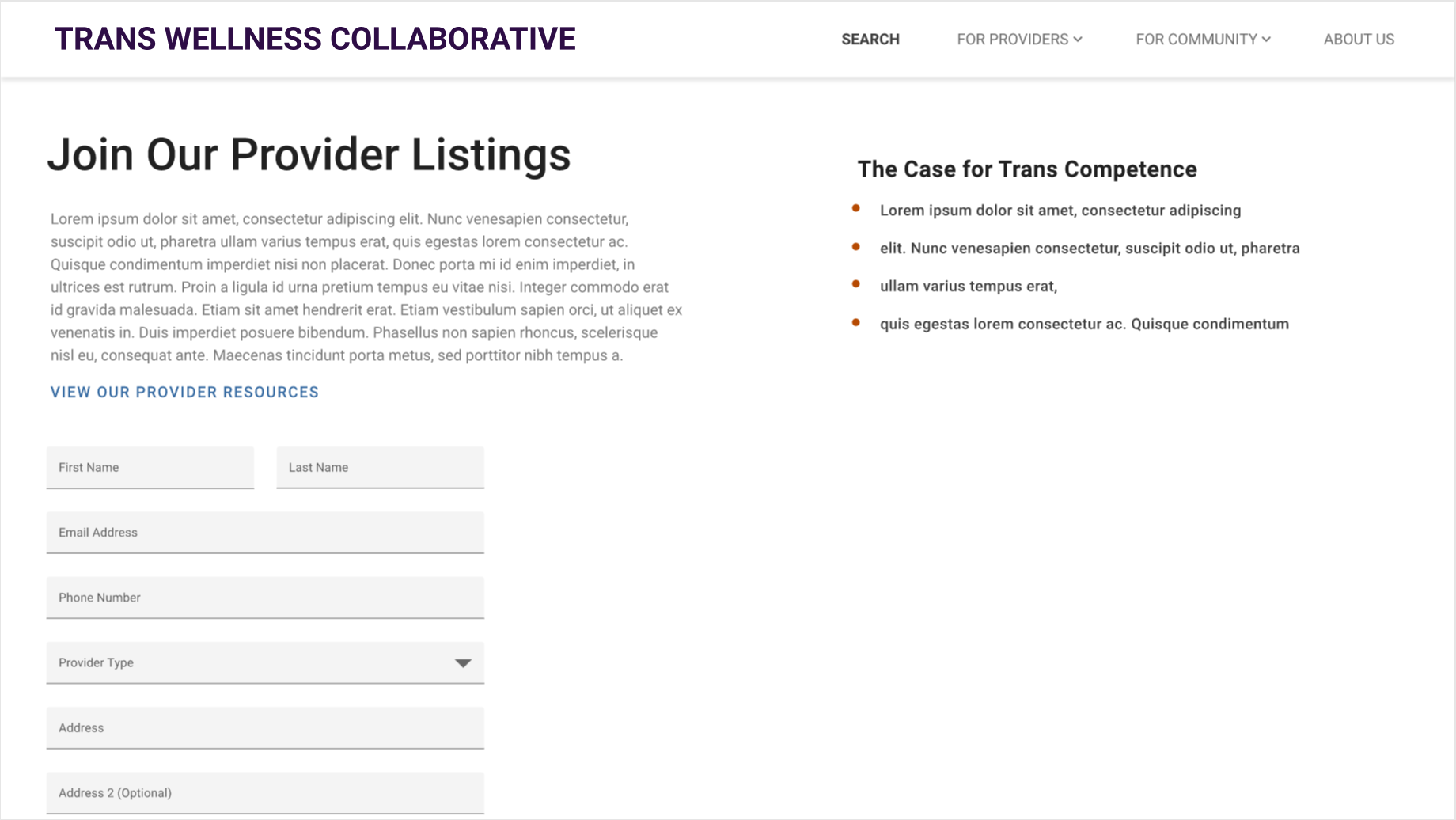
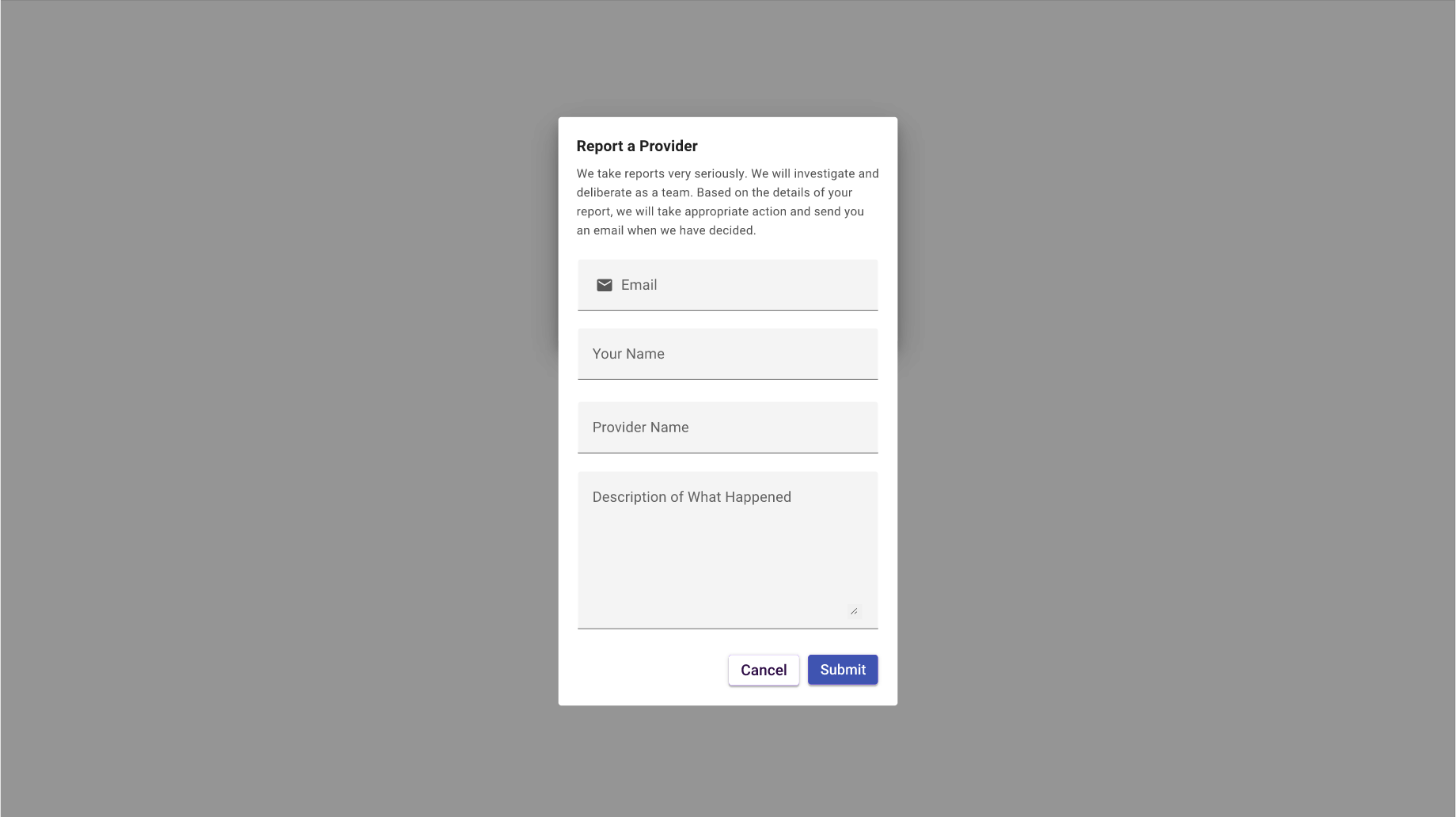
This project tackled a crucial issue: providing the trans community with easier access to competent healthcare. By transforming an informal Google Sheet into a searchable, scalable website, we were able to address the inefficiencies of word-of-mouth recommendations and provide a platform that could grow alongside both the trans community and the healthcare providers that serve them. Despite the constraints, the project balanced usability, scope, and cost to deliver an impactful solution.
